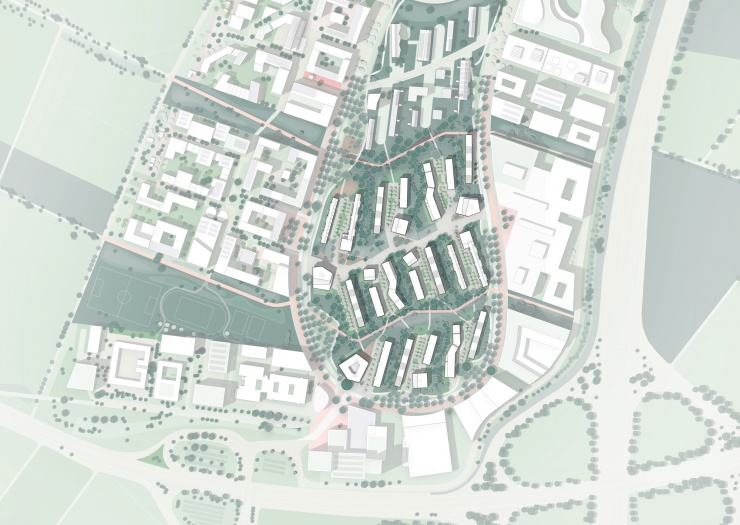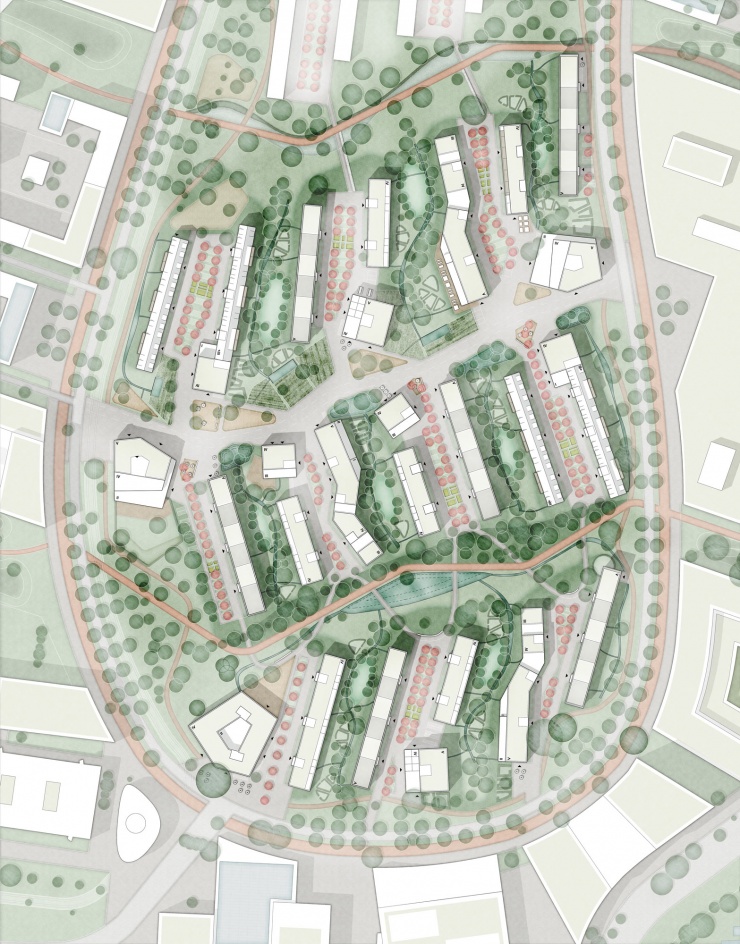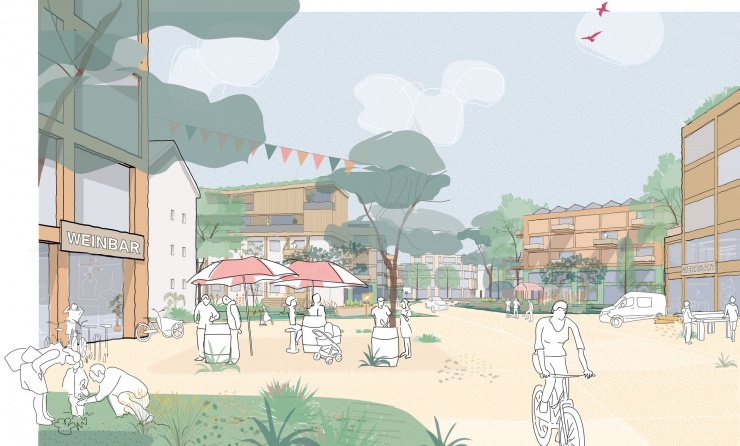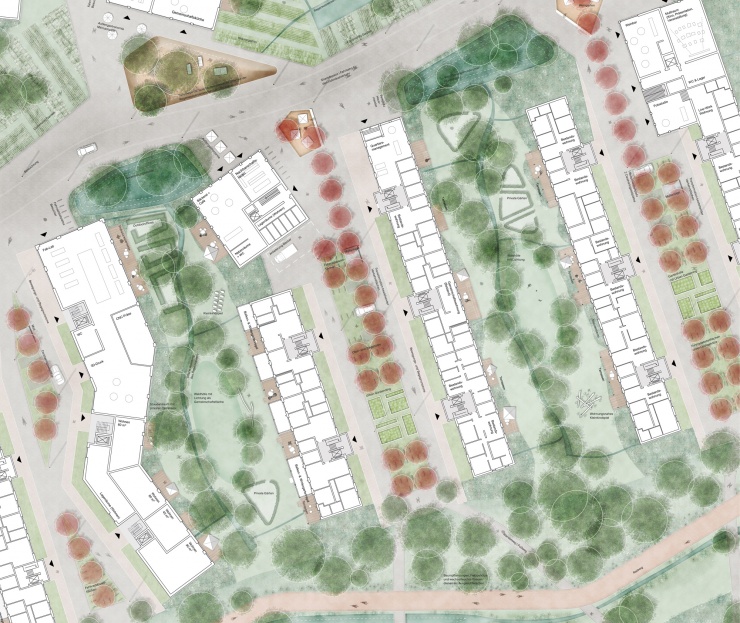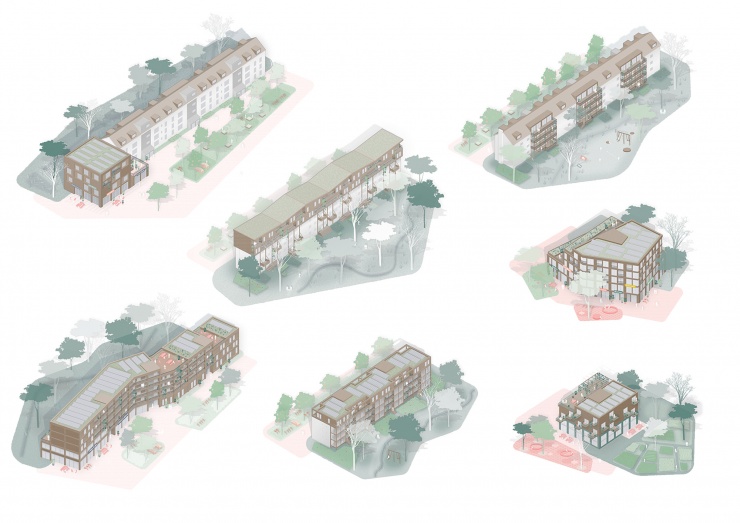-
Cooperative competition Patrick Henry Village
-
Heidelberg, Germany
-
Bundesanstalt für Immobilienaufgaben (BImA) (Vertreten durch: Bundesbau Baden-Württemberg, Staatliches Hochbauamt Heidelberg)
-
8 ha
-
in progress, 2021
-
2108-HPV
-
Urban development and open space planning draft
-
Jacob Fielers, Lena Lauermann
-
Planergruppe Oberhausen
-
1. prize
Green Zipper Heidelberg
The concept for the Patrick Henry Village in Heidelberg transforms the former mono-functional military barracks into a multifunctional and identity-creating living environment. The city is being created by the landscape and uses it as a „green zipper", creating a generous connecting space for the inhabitants.
The design offers the potential to rearrange existing deficits in the monofunctional and structural building and open space structures of the current rows of existing houses from the 1950s, to differentiate them in their design and to program them in many ways. The result is a lively quarter for people and nature with open spaces and buildings made of wood that can be used in a variety of ways. Achieving these goals requires:
• A differentiation of the open space framework into rooms with their own characters, functions and possible uses for different age and interest groups.
• the creation of a diverse landscape to promote biodiversity, improve the microclimate and strengthen local material and water cycles. The two green fingers are designed extensively close to nature, have a large number of biodiversity areas, integrate the tree population and take up the existing topography. The areas are not only becoming creatively powerful elements but also serve to balance residents and residents and as a living space for animals.
• A sensitive transformation of the building stock and urban development accentuation of the community fingers through a variety of structural additions in timber construction.
• the establishment of open ground floors with a high degree of mixed-use along with the community fingers as well as the creation of a wide range of living space. From a daycare centre to a laundromat and neighbourhood shops for residents, there is also space for commercial use of the Fab-Lab and Maker Space, through to factories, exhibitions and events. The available living space is enriched by other, diverse forms of living (small apartments, cluster apartments, shared apartments, family apartments, old people's living, etc.). At the same time, the character of a quiet residential area at the transitions to the Green Fingers is retained.
• the further development of the existing stock in favour of the grey energy that has already been used.
• the focus on future-oriented mobility, ie "mobility as a service" and active locomotion. Well integrated into an environmental network of trams, shuttle buses and district garages along the parkway, low-car mobility is planned within the district, which is geared towards cyclists and those walking.
-
Cooperative competition Patrick Henry Village
-
Heidelberg, Germany
-
Bundesanstalt für Immobilienaufgaben (BImA) (Vertreten durch: Bundesbau Baden-Württemberg, Staatliches Hochbauamt Heidelberg)
-
8 ha
-
in progress, 2021
-
2108-HPV
-
Urban development and open space planning draft
-
Jacob Fielers, Lena Lauermann
-
Planergruppe Oberhausen
-
1. prize
